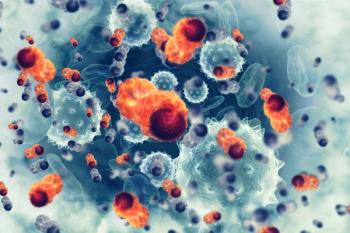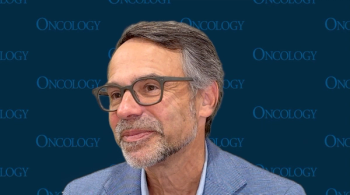
Frontline Combination Therapy Intensification May Improve Survival in NSCLC
Higher, durable rates of response to frontline therapy are needed to potentially improve long-term survival among patients with non–small cell lung cancer.
At the
According to Girard, head of the Curie-Montsouris Thorax Institute and professor of Respiratory Medicine at Versailles Saint Quentin University Paris Saclay Campus in Paris, France, higher and longer rates of response are needed to potentially prolong long-term survival in patients who receive immunotherapy plus chemotherapy. Based on findings showing that longer responses correlated with 5-year survival in patients who received immunotherapy plus chemotherapy, Girard said it is important to innovate in the first-line therapy setting by intensifying and combining treatment modalities.
In the RELATIVITY-104 study, the median progression-free survival (PFS) was 6.7 months (95% CI, 5.6-8.4) in patients who received relatlimab-rmbw plus nivolumab (Opdualag) and chemotherapy compared with 6.0 months (95% CI, 5.5-6.9) in those who received nivolumab (Opdivo) and chemotherapy (HR, 0.88; 95% CI, 0.71-1.11). The overall response rate was 51.3% vs 43.7% in each arm, and the median duration of response was 10.1 months vs 9.1 months.
Transcript:
The [current] treatment recommendation is [immunotherapy monotherapy] for PD-L1 above 50% in tumors and chemotherapy plus [immunotherapy regardless of the] PD-L1 status. The unmet need is that we need higher response rates and more durable responses to, in the end, have a higher proportion of patients with long-term survival.
Right now, in first-line [NSCLC], after chemotherapy post-immunotherapy, the overall survival [rate] at 5 years is approximately 20% to 25%. It’s mostly related to long responders to first-line treatment. The contribution of first-line treatment is important, and this is why it’s important to have innovation in these settings through combination and intensification of the treatment.
Reference
Girard N, Burotto M, Paz-Ares LG. Nivolumab (NIVO) plus relatlimab with platinum-doublet chemotherapy (PDCT) vs NIVO + PDCT as first-line (1L) treatment (tx) for stage IV or recurrent NSCLC: Results from the randomized phase II RELATIVITY-104 study. Presented at: 2024 ESMO Congress; September 13-17, 2024; Barcelona, Spain. Abstract LBA53.
Newsletter
Stay up to date on recent advances in the multidisciplinary approach to cancer.
















































































